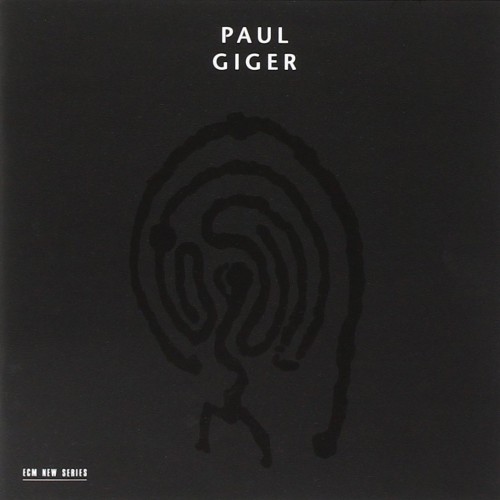Paul Giger violin solo
Recorded May 1992, Propstei St. Gerold
Engineer: Peter Laenger
Produced by Manfred Eicher
ECM 1487
The Greek myth of the Minotaur and the Labyrinth lies at the heart of Schattenwelt (Shadow-world), the Swiss violinist Paul Giger’s third album for ECM and one of the most fascinating violin programs one is ever likely to hear. The narrative therein begins with Minos, son of Zeus and ruler of Crete, who wishes to sacrifice a bull in honor of Poseidon, but cannot bring himself to do it once he beholds the glorious white creature given to him for that purpose. He decides to keep it, much to the consternation of his omniscient father, who as punishment imbues the bull with dangerous power. So dangerous, in fact, that only Hercules is able to tame it. Minos’s wife Pasiphae is also struck (though not without an enraged Poseidon’s influence) by the bull’s uncanny beauty and couples with it, thus producing the bull-headed/man-bodied Minotaur. In a fit of jealousy and outrage, Minos imprisons this abomination in the labyrinth of Knossos, where the Minotaur is eventually slain by Theseus, son of Poseidon.
Giger approaches these events from the top down, starting in the cosmos and ending in the underworld. Each chapter of his Seven Scenes from Labyrinthos is evoked with undying meticulousness. “Dancing With The Stars” coaxes physicality from nothingness, a coalescence of stardust and intent. With “Crane,” the gentle spell is broken as we are torn from our meditation into a penetrating light. Notes ululate and waver like Giger’s eponymous bird, long associated with ancient labyrinths like the one at Knossos. And thus do we get “Creating The Labyrinth,” a series of ascendant sirens, each more fluid than the last, delineating an impossible path. “Birth Of The Bull” and “Fourteen Virgins” form a tightly balanced pair. Where one is a celebration of life, the other represents the novennial sacrifice made to the Minotaur. “Death” is a chain of brooding arpeggios that beats faster toward a final breath of harmonic resolution. This bleeds over into “Dancing In The World Of Shadows,” forging a seamless connection between consciousness and the world beyond in a whirlwind of rhythmic scrapes and stick-to-string contact.
Two refractions of the same light, Bay and Bombay (Good Night), circumscribe the program’s darkness like a compass. Where the first is airy, its bow drawing out inner life from strings like a human breath until it is but a rasp in the throat of Time, the latter expands that unseen dimension into a more immediate spiritual quest. Giger draws a careful brush, which he uses to write a haunting tale across our field of vision.
As with Giger’s earlier ECM effort Chartres, the music on this album possesses the kind of stripped down harmony one associates with an old stone sanctuary, its glassless windows allowing every word sung or spoken full disclosure into the enveloping sky. His technique is outstanding yet subtle, as in a beautiful passage of Bombay during which he sustains a lead melodic line on one string while bouncing his bow for a rhythmic accompaniment on another. The result is a self-contained universe that is constantly looking in on itself, for it knows no other way. After all, what is a shadow-world but a realm in which individuals blend into the overwhelming darkness of all creation?
